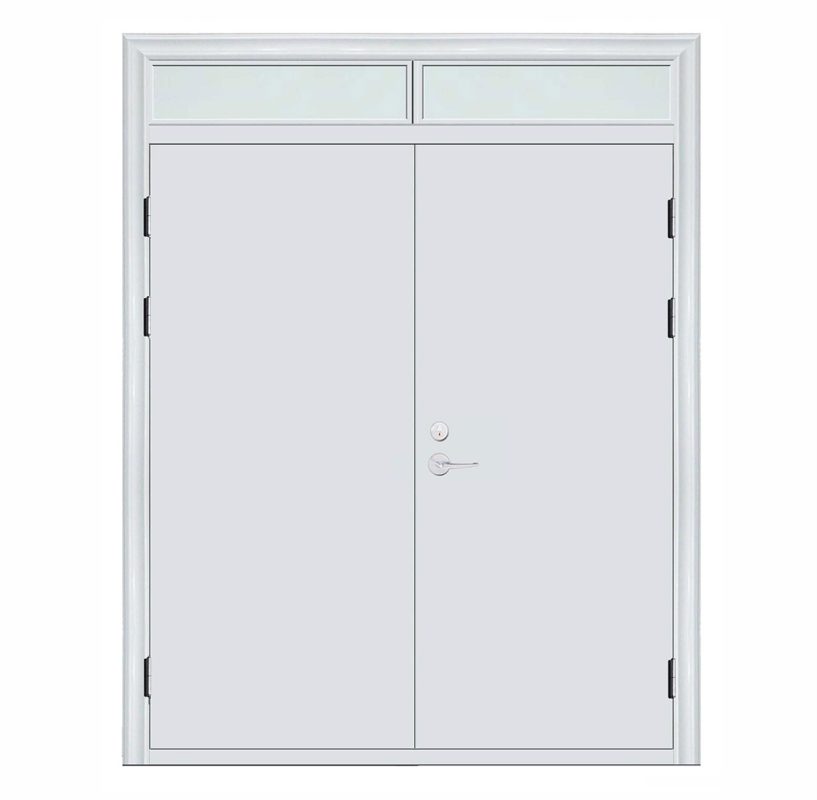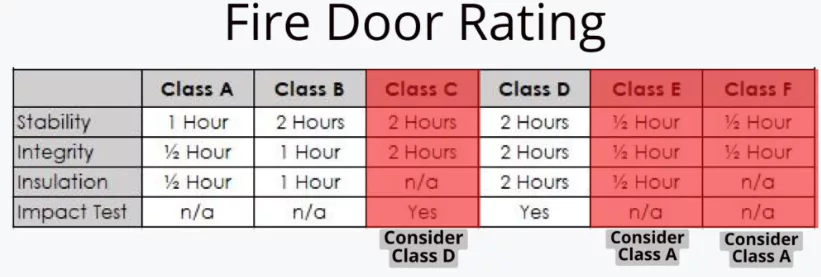
Incorporating and Optimizing Fire Door Regulations and Technical Specifications
At YK Fire Rated Door Manufacturer, we take pride in aligning every product with the most stringent fire protection regulations and engineering standards. Adherence to codes such as GB50045-95 is not just a compliance issue; it’s an assurance of safety and performance for every building where our steel fire doors are installed.
Understanding Fire Door Regulatory Requirements
In accordance with GB50045-95, critical provisions specify how doors and windows must perform in fire-prone architectural settings:
- Any door or window connecting rooms to atrium corridors must be equipped with self-closing Class B fire doors or equivalent fire-rated windows.
- Passageways or corridors that open to an atrium must be separated by Class B metal fire doors or fire shutters, offering fire resistance of over 3 hours.
- When doors or windows are installed on either side of a firewall, a minimum horizontal distance of 2.0 meters is required. If the space is less than that, fixed Class B fire-rated windows and doors are mandatory.
- Openings in firewalls should be avoided. If necessary, only Class A fire doors with automatic closing functions are permitted.
- In basements storing more than 30kg/m² of combustible materials, partition walls must withstand fire for at least 2 hours. The doors in these compartments must be Class A steel fire resistance doors.
These codes form the foundation of how YK steel fire doors are designed, ensuring they meet fire containment expectations in diverse structural applications.
Fire Resistance Ratings for Steel Fire Doors

Our stainless steel fire doors are meticulously tested to comply with class-based fire resistance standards:
- Class A: Withstands at least 1.2 hours of fire exposure.
- Class B: Maintains integrity for a minimum of 0.9 hours.
- Class C: Rated for no less than 0.6 hours.
These classifications help designers select the appropriate steel fire door type based on building risk zones and occupancy levels.
Directional Functionality and Safety
Fire doors must open in the direction of evacuation. For example:
- Right-opening doors swing clockwise.
- Left-opening doors swing counterclockwise.
This operational detail is crucial during emergencies and is strictly followed in every YK metal fire door we produce.
Classification by Design and Application
We manufacture a wide range of steel fire resistance doors tailored to architectural and operational needs:
- By door leaf count: Single-leaf and double-leaf options.
- By visual configuration: With or without fire-rated glass, vision panel configurations available.
- By resistance class: Class A, B, and C as per national codes.
Technical Construction Requirements
Materials and Build
All steel fire doors are constructed using cold-rolled steel:
- Frames: 1.2mm to 1.5mm thick.
- Door panels: 0.8mm to 1.2mm thick.
- Reinforcements: 1.2mm to 1.5mm, and not less than 3.0mm where screw holes are present.
Interior cavities are filled with non-combustible materials to ensure thermal insulation and prevent smoke or flame penetration.
Hardware and Fittings
Each YK stainless steel fire door integrates:
- Fire-rated locks, hinges, bolts (all tested to withstand temperatures exceeding 950°C).
- No double-action springs in hinges.
- Door closers installed on single-leaf models.
- Double-leaf configurations include concealed bolts and central cover strips.
Doors with viewing panels utilize fire-resistant glass matched to the overall fire resistance level of the unit.
Design and Structural Adaptability
Due to the standard width limitations of steel sheets, single-leaf metal fire doors are typically manufactured up to 1200mm wide. Door thickness remains under 45mm while ensuring sufficient thermal resistance.
At YK Fire Rated Door Manufacturer, our fabrication process adjusts to project-specific requirements. Each fireproof steel door is custom-engineered based on architectural drawings and fire protection standards.
Fire Door Regulations about Installation Guidance
Proper installation is key to achieving fire-resistance performance:
- Dimensions of structural openings must be submitted during ordering.
- Frames should be reduced by 10mm on top and sides to account for grout and expansion.
- The bottom typically embeds 20mm into the corner frame.
- Maintain a 3mm gap at the top and sides, 4mm at the center seam, and no more than 7mm between the bottom of the door leaf and finished floor.
Before welding, hollow frame sections are filled and leveled with a 1:3:1 mix of cement, sand, and perlite. Only after setting is the final installation carried out.
Why Choose YK’s Steel Fire Doors?

From metal fire doors for commercial corridors to stainless steel fire resistance doors for high-risk areas, YK’s engineering precision ensures unmatched safety, longevity, and compliance. Every unit meets or exceeds national and international standards, and our production lines are certified to handle both standard and custom demands with precision.
Whether you’re designing for a hospital, warehouse, office, or residential high-rise, YK Fire Rated Door Manufacturer offers a tailored solution grounded in regulatory compliance and decades of expertise.

Pingback: Does an Fire Door Need to Be Tested Annually? - YK | Fire Doors | Fire Windows | Fire Shutters
Pingback: Guangdun Door Industry Co., Ltd. Jindi Fire door Project Overview - YK | Fire Doors | Fire Windows | Fire Shutters